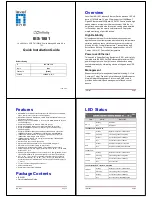
42
•
Configure authentication on each user interface, including the AUX interfaces.
Configuring authentication on a user interface
You can configure authentication on a user interface to control access to the switch.
describes the Telnet login authentication methods available for a VTY user interface.
Table 7
Telnet login authentication methods
Authentication method Feature
Application scenarios
None
Easy to configure, allows any user to Telnet to
your switch, and lowest in security
Lab environments and extremely
secure network environments
Password
Easy to configure, secure, and flat user
management
Environments that do not need
granular privilege management
Username and password
Complex to configure, secure, and
hierarchical user management
Environments where multiple
operators cooperate to manage
the switch
For more information about login methods, see
H3C S10500 Switch Series Fundamentals Configuration
Guide
.
Configuring the basic access function
An S10500 switch without any configuration can perform basic data forwarding immediately after it is
plugged into a network. To implement more forwarding features, configure the basic network settings
on the switch.
Table 8
Basic network settings
Setting Description
IP address
Enables remote switch management, for example, by using Telnet.
Static routes
Implement static routing.
VLANs
Divide the LAN into multiple VLANs for data security.
MSTP
Avoids loops in a dual-homed network.
For more information about these features, see
H3C S10500 Switch Series Configuration Guides
.
Verifying the network configuration
To verify the software version and network configuration, perform
display
commands in any view.
Task Command
Display the name, model, and system software version of the switch
display version
Display the current configuration of the switch
display current-configuration
Display the interface status and configuration
display interface brief
Display the IP configuration of Layer 3 interfaces
display ip interface brief
















































